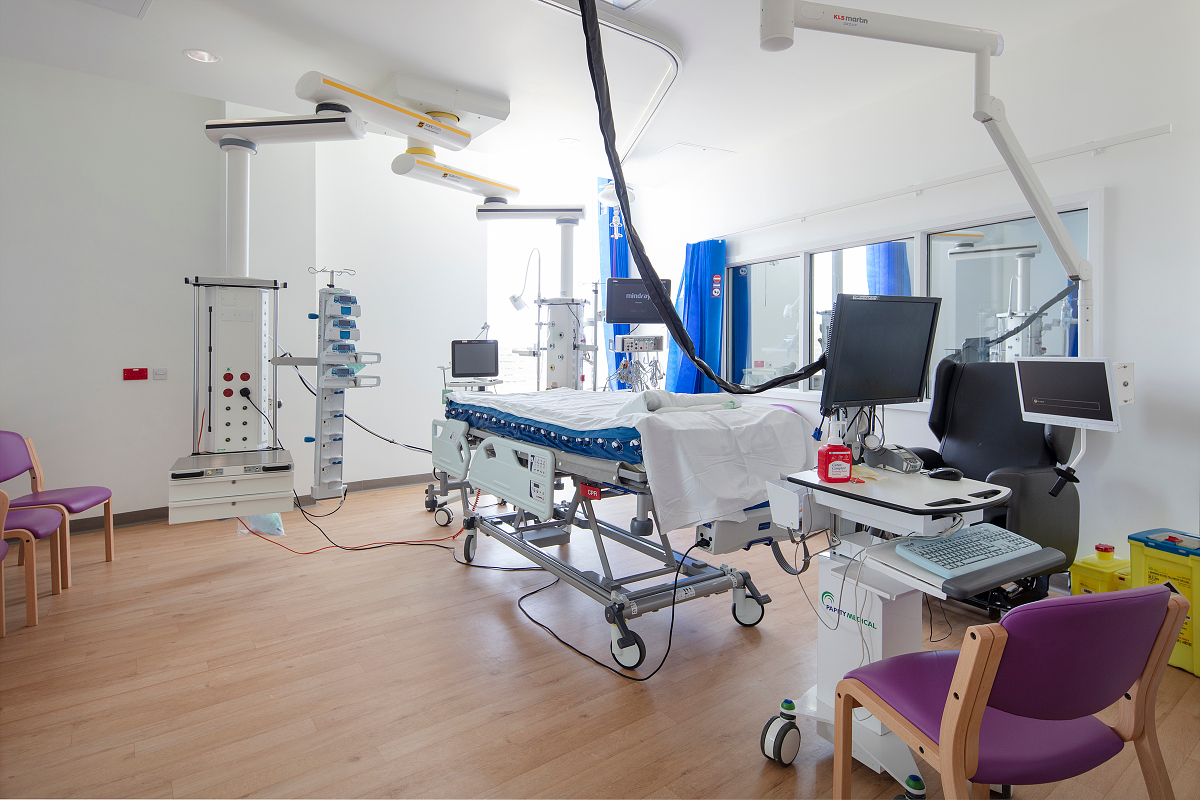Cover image credits: Royal Papworth Hospital Media Team
How this guide will work
I realised that this guide will probably be too much to digest in one sitting so I will be releasing it in manageable parts as I write them, aiming for a frequency of one section per week. The sections are putatively as follows (although this may change as I progress through writing them):
Contents
- Introduction (this post!)
- How to make the most of a CCU placement: practical tips and suggested daily routine
- What gets measured gets managed: monitoring a critically ill patient
- The pharmacological arsenal: important drugs and what they do
- Cardiac failure: supporting a failing heart
- Respiratory failure: ensuring gas exchange with impaired lungs
Introduction
In August 2020 I had the chance to spend some time in the cardiac critical care area (CCA) at the Royal Papworth Hospital in Cambridge. Although supposed to be a four week placement, being in the middle of the Covid-19 pandemic meant that due to measures reducing footfall in the hospital, this was shortened to two weeks. Nevertheless I managed to get so much out of this placement, saw some incredible applied physiology and picked up useful clinical skills. I therefore have worked on this document with the aim of 1) educating the reader on what critical care involves and 2) providing tips for medical students on how to make the most of a placement in critical care medicine (CCM) and 3) get just as much out of their placement as I did during mine.
Why critical care?
Why did I choose cardiac critical care? I'm close to graduating from medical school (just a few months more to go at the time of writing) which means I have been working hard towards securing a training job in the speciality of my choice: cardiothoracic surgery. Although specialty applications are not for two more years, it is wise to start working early on strengthening your portfolio because it is a notoriously competitive specialty. In addition, most cardiac surgeons play an active role in the postoperative care of their patients (who all spend at least one day in the CCA) and therefore spending time embedded in CCA is a great way to learn how to manage some of the most complex and critically unwell patients in the entire hospital, and learn how to manage postoperative complications.
What is critical care and what does it involve?
I would define critical care as the care of patients who need close monitoring and support for organ systems that are incapable of functioning without being supported by some external means. Some of these means are summarised in the table below. Organ support may also include various pharmacological agents which can act to augment and/or protect organ systems. These will be discussed in more detail in subsequent sections.
Table 1: Organ support systems
| Support system | Organs being supported |
|---|---|
| Mechanical ventilation | Lungs |
| Haemofiltration/dialysis | Kidneys |
| Extracorporeal membrane oxygenation | Heart and/or lungs |
| Total parenteral nutrition | Gastrointestinal tract |
What kind of conditions do we manage in cardiac critical care?
At least at RPH, the vast majority of patients in the CCA are post-cardiac surgery patients. These patients require support of their cardiovsacular system, the most common problem being hypotension. What causes this hypotension? The causes of hypotension can be briefly summarised as falling into one of three categories: 1) factors before the heart (preload), 2) factors within the heart and 3) factors after the heart. These are summarised in Table 2.
Table 2: causes of hypotension post cardiac surgery
| Causes of hypotension | |
|---|---|
| Pre-cardiac | Hypovolaemia - Bleeding |
| Cardiac | Cardiac tamponade Myocardial damage/dysfunction - Prolonged bypass time - Ischemic damage - Dilated/hypertrophic cardiomyopathy Arrhythmias - Severe recurrent VT/VF/bradycardia/heart block |
| Post-cardiac | Increased vasodilation, vascular permeability and fluid extravasation - Post-surgery vasoplegia - Sepsis |
Other conditions commonly requiring intensive care support are pulmonary oedema, respiratory distress syndrome, severe systemic infections and acute kidney injury necessitating renal replacement therapy.
So, if this stuff interests you, keep an eye out on this page and follow my socials (see links at the top of the page). Next week: practical tips for how you, a student, can make the most of a critical care placement.

